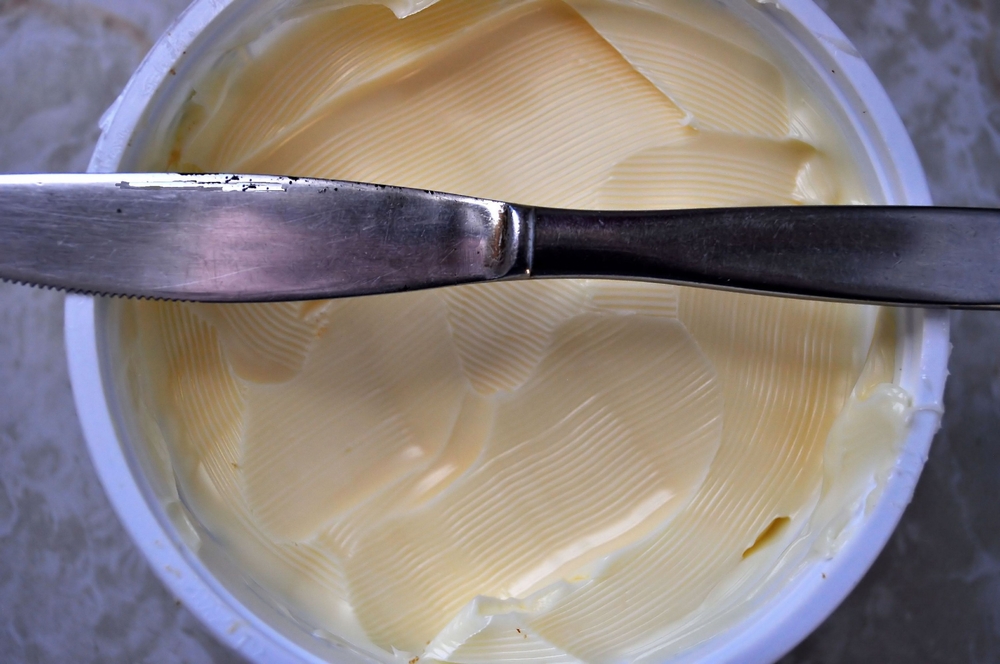
Margarine-like, vegetable oil spread, stick or tub, sweetened
Margarine was discovered in France and has been around since the mid-1800s. Margarine is typically made from a base containing refined vegetable oil. Hydrogen is passed through the vegetable oil which adds more hydrogen bonds then were previously there and it’s oil form. The result is typically referred to as hydrogenated vegetable oil. The reason why this process occurs is because vegetable oils are in liquid form at room temperature. To make them easier to spread on various foods, the oil needed to be thickened to more of a butter consistency.